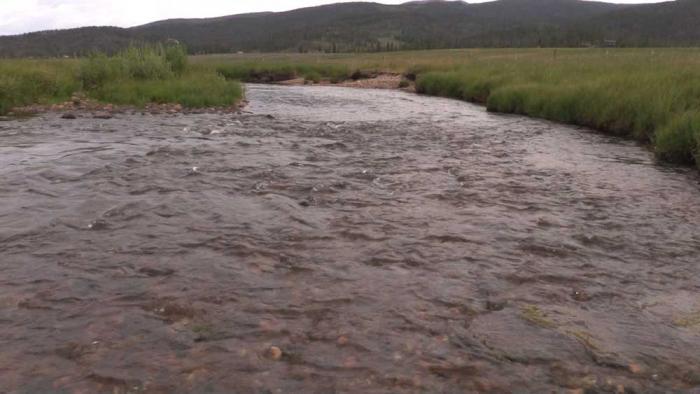Denver Water helps bolster flows, lower stream temps in Grand County
Denver Water is working with its partners for a second time this summer to address stream flows and water temperatures in Grand County.
This time around, the utility and its partners at Learning By Doing tracked a rise in water temperature on Ranch Creek, a tributary of the Fraser River near Tabernash.
In response, beginning Aug. 2, Denver Water started leaving additional water in Ranch Creek to lower stream temperatures. Depending on natural inflow, up to an additional five cubic feet per second will be bypassed through August.
How much is five cubic feet per second? It’s about 2,250 gallons per minute. So imagine a whole lot of one-gallon milk jugs floating by.
This isn’t the first time Denver Water has worked with partners to give a boost to Ranch Creek. You can read in detail about experiments to increase flows in the stream in 2016, and watch the video here:
Denver Water is taking another step this summer as well.
The utility is forgoing some of the water it could be collecting in Williams Fork Reservoir. Instead of reducing reservoir outflows to the minimum allowable of 17 cfs, Denver Water is setting outflows at 67 cfs.
That leaves another 50 cfs in the river to help lower temperatures on the Colorado River between the reservoir and Kremmling.
So think a lot more of those gallon jugs (like 22,000+ a minute more gallon jugs).
These bypasses follow efforts by Denver Water earlier this summer, in coordination with the Colorado River District, Grand County and other Learning by Doing partners, to leave additional water, roughly 10,000 acre-feet, in the Fraser River Basin.
Denver Water values its partnerships and neighbors on the West Slope and, through efforts like this, continues work to monitor, respond to and improve environmental conditions in the region.


